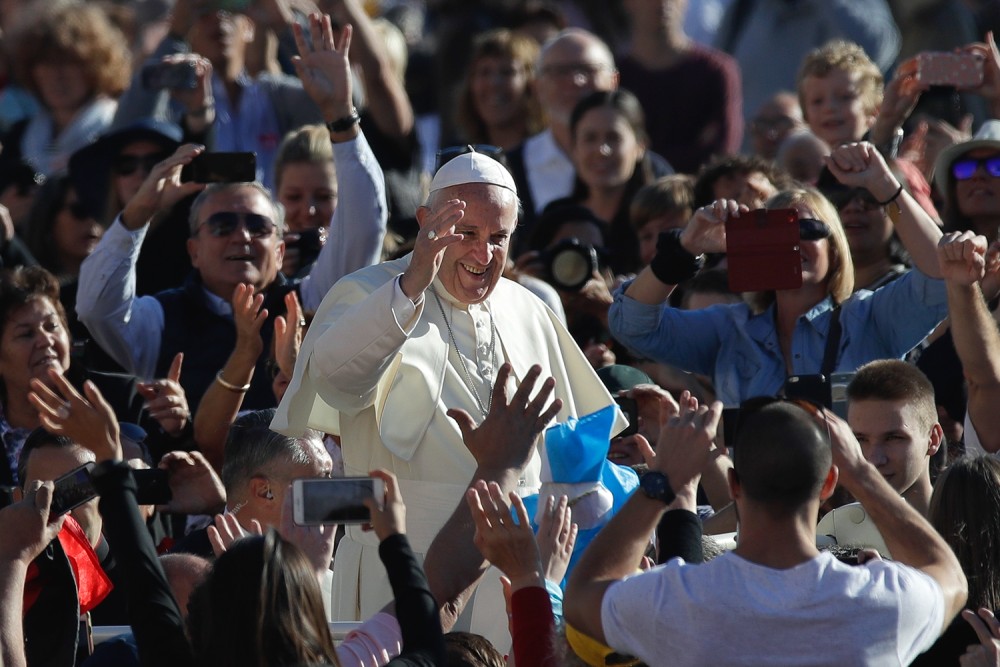Mourning Pope Francis—and his limits
As a progressive Catholic, I admired Francis. As a woman and a feminist, I was often disappointed by him.

Pope Francis greets the crowd gathered in St. Peter’s Square during his weekly general audience at the Vatican in 2017 (AP Photo / Alessandra Tarantino).
In the days following the death of Pope Francis, I opted to avoid the predictable negative coverage from his far-right critics, focusing instead on essays honoring the memory of the pope whose interpretation of his office was summed up in his memorable statement that priests should be “shepherds living with the smell of the sheep.” But I also read a number of reflections, most of them unpublished, by Catholics and ex-Catholics whose recollections of Francis are laced with disappointment.
The 12 years of Francis’s pontificate were turbulent, marked by war, climate catastrophe, income inequality, civil unrest, forced migration, a global pandemic, ecclesial schism, and the rise of extremist movements in numerous nations. In response to these challenges, Francis remained rooted in the gospel and Catholic social teaching. Hallmarks of his papacy were an emphasis on environmental and economic justice, care for the vulnerable, and a synodal (or listening) church. Even in his final days, he spoke in defense of migrants and chastised the powerful.
Despite the outcry of traditionalists who fomented for a smaller but “purer” church, Pope Francis was willing to “make a mess,” as he said at World Youth Day in 2023. Regarding the church not as a club for the perfect but as a field hospital for the wounded, he worked to enlarge its parameters to include those on the periphery. This included outreach to LGBTQ Catholics, who early in his papacy were heartened by his now-famous remark, “Who am I to judge?”




